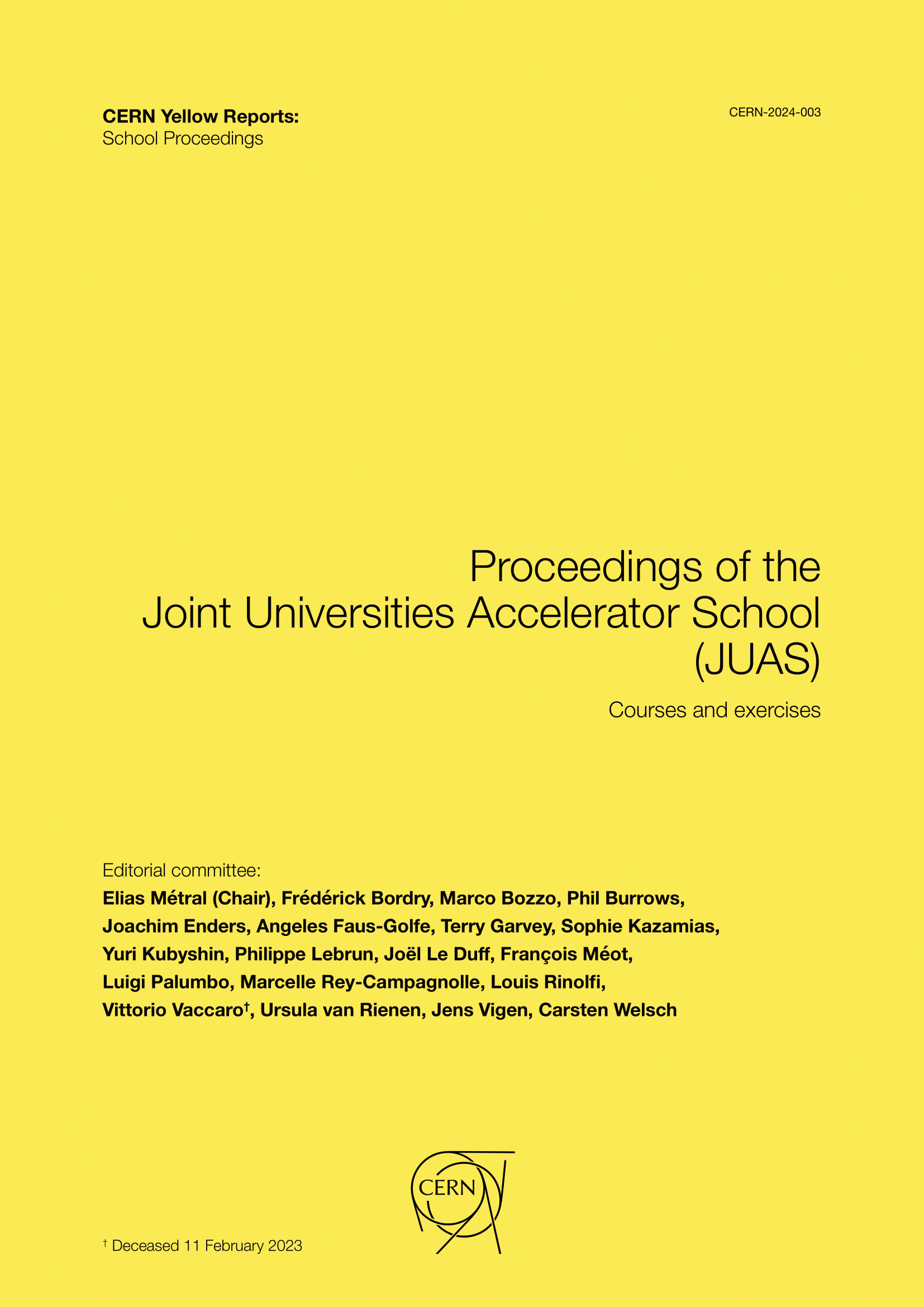II.13 — Radiation safety
DOI:
https://doi.org/10.23730/CYRSP-2024-003.1653Abstract
The purpose of this lecture is to provide insight into the importance of managing ionising radiation hazard. Unfortunately, this hazard cannot be removed when operating with accelerators, and the level of the risk depends on the type and usage of the accelerators. Understanding why radiation safety is needed and the lessons learned from serious accidents involving the ionising radiation hazard is essential. Also, the role of international organisations providing an external and rigorous approach to handling this hazard is covered, as well as the main principles of radiation safety, in particular, the term ALARA. A brief definition of the most relevant magnitudes and the meaning of the limit values are essential to understand how to interpret the official dosimetry data. A very simple and general approach to how the main particles interact with the matter is given through some characteristic examples. As a very summarised guidance, it explains how to proceed with a radiation shielding analysis and also the objective of the interlock systems. Finally, a recommendation on what type of radiation detector to use depending on the radiation environment is given in a very broad outline. Most of the examples provided come from electron and proton synchrotron accelerators due to the experience and background of the author.
Downloads
Published
Issue
Section
License

This work is licensed under a Creative Commons Attribution 4.0 International License.
Authors who publish with this publication agree to the following terms:
- CERN retains copyright and publishes the work licensed under the Creative Commons Attribution License 4.0 that allows others to share the work with an acknowledgement of the work's authorship and initial publication in this series.
- Authors are able to enter into separate, additional contractual arrangements for distribution of the published version of the work (e.g., post it to an institutional repository or publish it in a book), with an acknowledgement of its initial publication in this series.
- Authors are permitted and encouraged to post their work online (e.g., in institutional repositories or on their website) prior to and during the submission process, as it can lead to productive exchanges, as well as earlier and greater citation of published work (See The Effect of Open Access).

